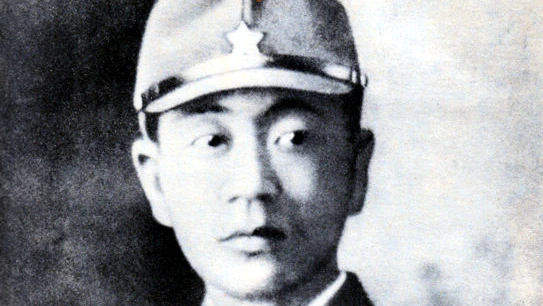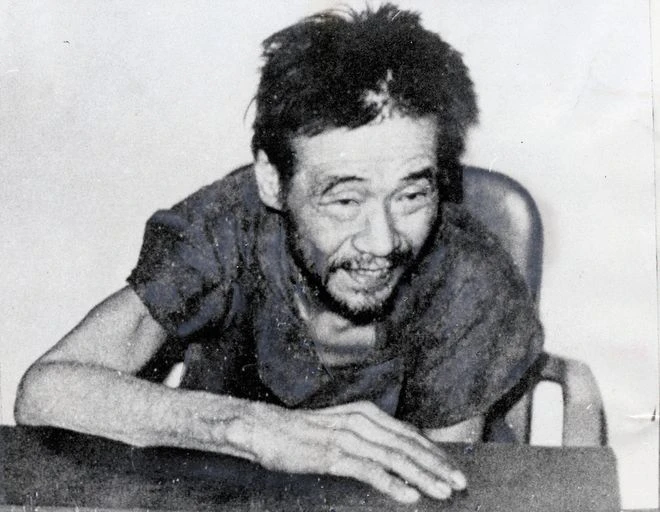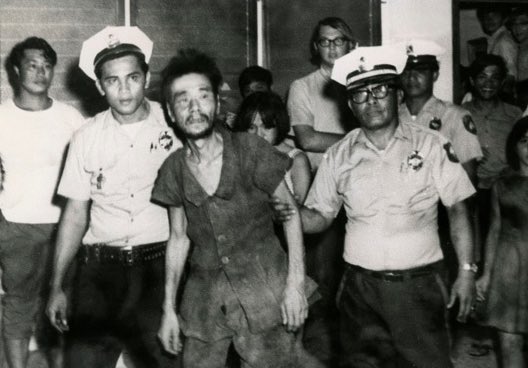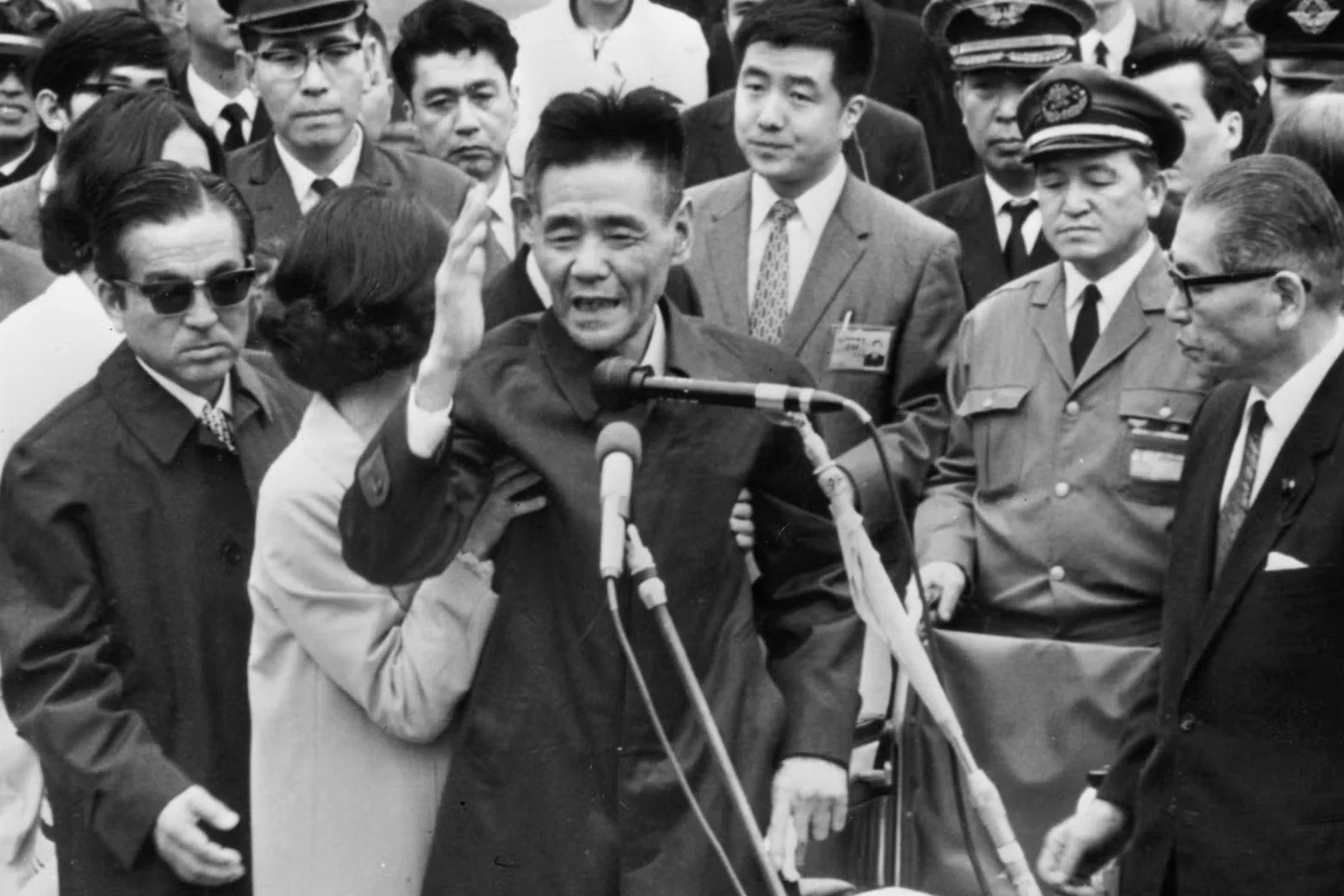Shoichi Yokoi was a sergeant in the Imperial Japanese Army (IJA) during the Second World War. He was one of the few Japanese soldiers, who refused to surrender after the end of the war in 1945. Unable to bear the shame of being captured as a prisoner of war, Yokoi hid in the jungles of Guam. He was discovered on 24 January 1972, almost 28 years after U.S. forces had regained control of the island.
Biography
Shoichi Yokoi was born poor in the rural outskirts of the industrial city of Nagoya in 1915. He grew up during one of the country’s deepest recessions. His mother walked out on her alcoholic husband when he was just 3 months old and struggled to support her only child.
Yokoi was passed from one reluctant relative to another until he was 15 when he apprenticed himself to a master tailor in Toyohashi, 40 miles southeast of Nagoya. The work was so long and the food rations so short that when Yokoi was called to his first draft physical in 1935, he flunked. He was however later conscripted in 1941.
World War II Service
Shoichi Yokoi initially served with the 29th Infantry Division in Manchukuo. In 1943, he was transferred to the 38th Regiment in the Mariana Islands and arrived in Guam in February 1943. When American forces captured the island in the 1944 Battle of Guam, Yokoi went into hiding with nine other Japanese soldiers.
Initially, the holdouts survived by eating locals’ cattle. But as their numbers shrank and the likelihood of discovery grew, they retreated to increasingly remote sections of the island, living in caves or makeshift underground shelters and dining on coconuts, papaya, shrimp, frogs, toads, eels, and rats. Yokoi drew on his tailoring skills to weave clothing out of tree bark and marked the passage of time by observing the phases of the moon.
Seven of the original ten eventually moved away and only three remained in the region. These men separated but visited each other periodically until about 1964 when the other two died in a flood. For the last eight years, Yokoi lived alone. He survived by hunting, primarily at night. He also used native plants to make clothes, bedding, and storage implements, which he carefully hid in his cave. Yokoi hid in the jungle, fearing he might be captured by American soldiers occupying the southern islands of Japan.
Read More:
- The Horrific Deeds of Shiro Ishii and Unit 731
- Why Japan Attacked Pearl Harbor?
- Japan and empty homes
Discovery
On January 24, 1972, two fishermen Jesus M. Duenas and Manuel D. Garcia spotted Yokoi checking a bamboo fish trap in a part of the Talofofo River about four miles away from the nearest village. They had assumed Yokoi was a villager from Talofofo, but he thought his life was in danger and attacked them. They managed to subdue him in his weakened state and carried him out of the jungle.
Yokoi later said that he expected the local men to kill him at first but was surprised when instead they allowed him to eat hot soup at their home before turning him over to the authorities. He was in relatively good health, but slightly anemic due to a lack of salt in his diet according to doctors at Guam Memorial Hospital.
After hearing Yokoi’s story, officials in Guam arranged to repatriate him to Japan. Though he’d found leaflets and newspapers detailing the conflict’s end two decades earlier, he viewed these reports as American propaganda and continued to resist surrendering. “We Japanese soldiers were told to prefer death to the disgrace of getting captured alive,” the soldier later said.
Return to Japan
Shoichi Yokoi returned back to Japan in February 1972, receiving a hero’s welcome from a crowd of 5,000. Upon his arrival at the airport, Yakoi told his countrymen he was ashamed to have come home alive. He said, “It is with much embarrassment that I return”. The remark quickly became a popular saying in Japan.
Despite all his experiences in the jungle of Guam, Yokoi remained stubbornly loyal to Emperor Hirohito, who was still on his throne when he returned. In an interview with New York Times, he said: “I have returned with the rifle the emperor gave me, I am sorry I could not serve him to my satisfaction.”
Also while visiting the grounds of the Imperial Palace, Yokoi said, “Your Majesties, I have returned home … I deeply regret that I could not serve you well. The world has certainly changed, but my determination to serve you will never change.”
The Japanese people were fascinated by his survival story, they were however divided over what it meant. Some saw him as a victim of the fearsome prewar educational system that had made war seem acceptable and free-thinking subversive. Neo-nationalists branded him a simple deserter. One detractor sent him a letter containing a razor blade and the suggestion he apply it to his wrists. Younger Japanese admired his grit but found his sacrifice incomprehensible.
Later life
After a whirlwind media tour of Japan, Shoichi Yokoi married and settled down in rural Aichi Prefecture. He became a popular television personality and an advocate of simple living. He was featured in a 1977 documentary film called Yokoi and His Twenty-Eight Years of Secret Life on Guam.
Yokoi unsuccessfully contested for Parliament in 1974 and detailed his experiences in a best-selling book and lectures delivered across the country. He made several trips back to Guam and in an interview with BBC News, he noted that he “never quite felt at home in modern society. ”
Yokoi died in 1997 of a heart attack at the age of 82 and was buried at a Nagoya cemetery, under a gravestone that had originally been commissioned by his mother in 1955, after Yokoi had been officially declared dead.





